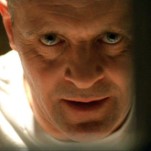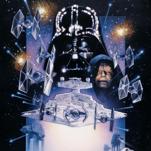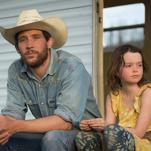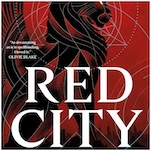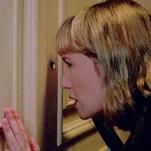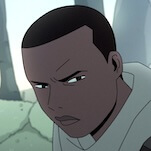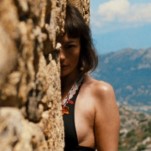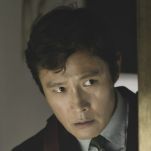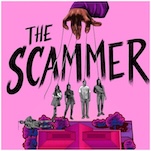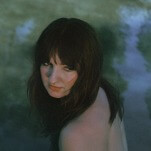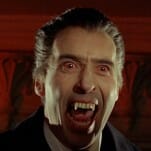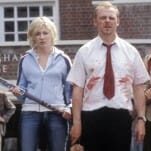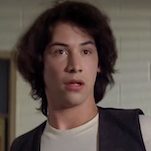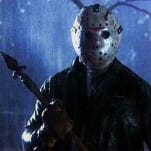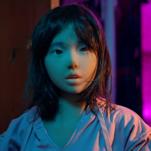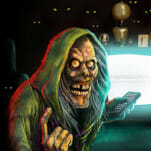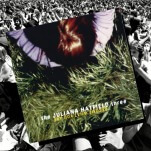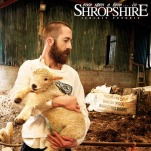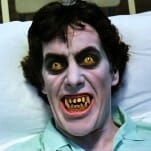Rilo Kiley and Rock’s New Era
The mainstream press continues to write—with no subtle undercurrent of glee—about the woes of the recording industry. But if you put your ear to the ground and hold your breath, you can hear a gorgeous chord of hope ringing as crisply and clearly as the opening strum of “A Hard Day’s Night.” As alarm bells ring in anticipation of a Christmas season where CD sales may ?nally bottom out, this year also offers a peek at new beginnings. For those who watch the Billboard charts on a week-to-week basis, recent high-charting debuts from groups like The Shins, Bright Eyes, Arcade Fire and Modest Mouse signal a sea change that’s brought some of the wittiest, edgiest and most organically satisfying artists to a level of accessibility and success otherwise barely imaginable in past eras, where the gloss and market blitz of disposable pop megastars inevitably overshadowed the quiet legions of journeyman bands evolving and slowly growing an audience through word-of-mouth, college radio and hard years on the road.
Of course, the juxtaposition of plastic pop acts and “sincere” indie-rockers is a canard, as the dichotomy is never so simple. Sometimes, even the glitziest pop acts are hard workers and sincere music lovers, and had long roads to “overnight success.” And the ?ags of purity, noble poverty, outsiderness and punk attitude that the more self-conscious denizens of the would-be indie underground tend to ?y is often riddled with the shreds and knots of hypocrisy. But these basic facts remain: Bands with members over or approaching 30, with complex songs, varied instrumentation, no Behind the Music melodrama and no obvious radio singles are able to hit doubles and triples commercially with little sensationalism these days, when a decade ago they would’ve been unlikely to get a solid at-bat. And they’re increasingly releasing records on major labels that would’ve had limited interest in the heydays hair metal, pop rap or boybands. We’re in an era where the Clever Indie Everyperson has reached a higher stratum of the cultural jetstream.
Los Angeles’ Rilo Kiley is a significant case in point. Only three full-length albums into their career, they’ve become low-gloss superstars within the rarified world of blogs, music magazines and left-of-the-dial radio, propelled by songs and an understated charisma. On the heels of More Adventurous, their first release distributed by Warner Bros., and a series of festival performances ranging from Glastonbury to Coachella, the band only increased its cachet by scattering to the winds long enough to pursue solo albums and other side projects that seeped deeper into the collective conscious. Guitarist/vocalist Blake Sennett renewed his work with The Elected, an elegant and underrated indie collective; bassist Pierre de Reeder did artwork and design for other artists (including Rilo Kiley vocalist Jenny Lewis) while writing his own songs and Lewis collaborated with Death Cab for Cutie’s Ben Gibbard in The Postal Service and released the excellent, country-tinged Rabbit Fur Coat with the Watson Twins, featuring Rilo Kiley drummer Jason Boesel on the skins and Conor Oberst and Gibbard on guest vocals. The critical acclaim lavished on these albums has only served to raise expectations as Rilo Kiley prepares for the upcoming release of its fourth record, Under the Blacklight.
Like the other workmanlike lights of the rich, emerging indie-heading-mainstream tier (see also Spoon, Broken Social Scene, Neko Case and M. Ward), Rilo Kiley operates with intention and artistry, but isn’t performance art the way metal acts or Iggy Pop are. Rather, the band revitalizes the Laurel Canyon aesthetic, in which artists like Joni Mitchell and Stephen Stills churned out songs without their images hovering over them like a paisley veneer—at least until their talent created weighty expectations that their names and the occasional gossip inevitably began to cue.
The unofficial white elephant in the room when talking about Rilo Kiley is the sloppy thrall so many indie fanboys find themselves in when the faintest mention of Jenny Lewis is made. A former child actress (a topic well past its sell-by date in interviews), Lewis has been described as everything from that hip babysitter you fell in love with as an eight-year-old to a red-dress siren with piercing eyes and an angel voice. In person, Lewis has a casual coolness but also a quiet tenacity—looking straight ahead, concentrating on questions and giving direct, thought-out answers with the focus of an eager young overacheiver doing long division. While her songs have plainly stated sinews of sex and interpersonal intrigue that more frequently feel like universalist storytelling than necessary confessions, what’s mysterious about Jenny Lewis is how she contains unusual talent within the frame of an otherwise accessible personality. You can see scenarios race in her head while she barely cracks a smile—she casually quizzes me on what would happen if, for instance, the band refused my request to tape-record the interview. Lewis is one of those people whose essential restraint, stretched tight over clear inner complexity, makes her a sensation. You’ll probably never see her in a leather catsuit and high heels playing rock star, but don’t be surprised if she ultimately becomes known as an indie-rock Mona Lisa.
Co-writer and kindred spirit Blake Sennett is a more ethereal cat, thinking through his responses as he talks them out, exploring the space with a quizzical honesty that half feels like he might be putting you on until you look back at him and he gives you a nod to punctuate what he’s just said. He’s the more stereotypical songwriter of the two, the quiet kid who appears to be doodling in the margins on a pad in a train station—but when you step closer and glance over his shoulder, it turns out the sketch is a dazzlingly complex cityscape that pours over pages and could well be framed if it were ever deemed complete. In a light moment, with mock bravado and a chuckle, Blake describes his guitar style as “wiry lightning,” but there’s an honest, earned boast underneath. On Under the Blacklight there are scads of loopy funk-guitar gestures wrapped in wistful gauze. There’s a road-weary ambient openness to Sennett’s playing that feels like classic early-’70s California rock stretched through the space-age strainer of ’80s dream pop and distilled into tight little studio-polished crystals which are scattered constellation-like through the band’s songs without scuffing the surface glaze created by the creamy ?ow of Lewis’ singing. Still, in person, Sennett gazes and talks like a curious, arty child, even if he plays like an old soul.
For their part, Boesel and de Reeder have the easy patience and abundant humor of supporting players who might frequently be called upon to be voices of reason or clear second opinions. While Lewis admits to frequently writing on bass these days and playing the instrument live on occasion to allow de Reeder more time on the guitar, the versatility and punch of Rilo Kiley’s rhythm section is a marked feature of the new record, particularly on slinky surprise jam “The Moneymaker” (written by Lewis on bass) or the lightly Latin “Dejalo.”
Collectively, the band members’ demeanor is warm and congenial, as they alternate playing straight man to one another’s goofier asides. Over a late lunch in the concrete warrens of the fringes of West L.A., the banter is easy and open. Considering the politics of artistic evolution as they relate to fan expectations, Lewis earnestly but with gentle force says, “It’s great to allow a band that you like to grow and change. And I am relieved that we didn’t make The Execution of All Things over and over again: That’s impossible to do because we’re in a completely different place. But why? Why would you possibly want to keep making the same record over and over again?”
“Why, God, why?” wails Blake with a smirk.
Calmly ignoring the theatrics, Lewis completes the thought. “And we’re fully aware of what we’re doing, so there’s no puppetmaster.”
“Except maybe James Hetfield,” quips Jason Boesel.
-

-

-

-

-

-

-

-

-

-

-

-

-

-

-

-

-

-

-

-

-

-

-

-

-

-

-

-

-

-

-

-

-

-

-

-

-

-

-

-









